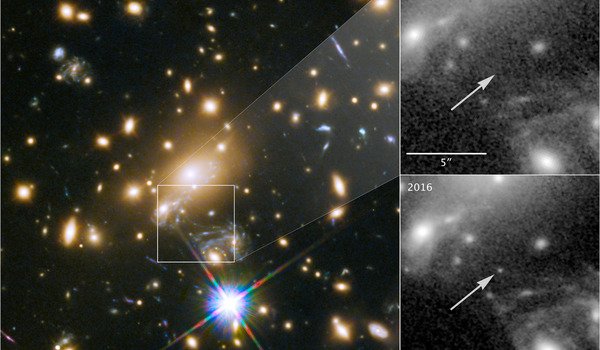A possible galaxy 13.5 billion light-years from Earth has broken the record for the farthest astronomical object ever seen. This age places this collection of stars, now dubbed HD1, between a period of total darkness (around 14 billion years ago, the universe was a blank slate devoid of any stars or galaxies) and one of just-burgeoning lights as clumps of dust and gas were growing into their cosmic destinies).
An international team of astronomers, including researchers from the Center for Astrophysics | Harvard & Smithsonian, has discovered the most distant astronomical object ever discovered: a galaxy.
The galaxy candidate, named HD1, is 13.5 billion light-years away and was described in the Astrophysical Journal on Thursday. Scientists have begun to speculate about the galaxy in an accompanying paper published in the Monthly Notices of the Royal Astronomical Society Letters.
The team has two suggestions: HD1 may be forming stars at an astonishing rate and may even be home to Population III stars, the universe’s very first stars, which have never been observed before. Alternatively, HD1 could be home to a supermassive black hole the size of our Sun.
It was very difficult work to find HD1 out of more than 700,000 objects. HD1’s red color matched the expected characteristics of a galaxy 13.5 billion light-years away surprisingly well, giving me a little bit of goosebumps when I found it.
Yuichi Harikane
“It can be difficult to answer questions about the nature of a source that is so far away,” says Fabio Pacucci, lead author of the MNRAS study, co-author of the ApJ discovery paper, and astronomer at the Center for Astrophysics. “It’s like attempting to guess a ship’s nationality based on the flag it flies from afar ashore, with the vessel in the middle of a gale and dense fog. The flag’s colors and shapes can be seen, but not in their entirety. In the end, it’s a long game of analysis and eliminating implausible scenarios.”
In ultraviolet light, HD1 shines brilliantly. Pacucci explains this by stating that “some energetic processes are occurring there or, better yet, did occur some billions of years ago.”
At first, the researchers assumed HD1 was a typical starburst galaxy, one that produces stars at a rapid rate. However, after calculating how many stars HD1 produced, they discovered “HD1 would be forming more than 100 stars per year, which is an incredible rate. This is at least ten times what we would expect for these galaxies.”
That’s when the team began to suspect that HD1 wasn’t forming typical stars.
“The very first population of stars that formed in the universe were more massive, more luminous and hotter than modern stars,” Pacucci says. “If we assume the stars produced in HD1 are these first, or Population III, stars, then its properties could be explained more easily. In fact, Population III stars are capable of producing more UV light than normal stars, which could clarify the extreme ultraviolet luminosity of HD1.”

However, a supermassive black hole could also explain HD1’s extreme luminosity. The region around the black hole may emit high-energy photons as it consumes massive amounts of gas. If that’s the case, it would be by far the earliest supermassive black hole ever discovered, occurring much closer to the Big Bang than the current record-holder.
“HD1 would be like a giant baby in the early universe’s release room,” says Avi Loeb, an astronomer at the Center for Astrophysics and co-author on the MNRAS study. “It exceeds the highest quasar redshift on record by nearly a factor of two, which is a remarkable achievement.”
After more than 1,200 hours of observation with the Subaru Telescope, VISTA Telescope, UK Infrared Telescope, and Spitzer Space Telescope, HD1 was discovered. “It was very difficult work to find HD1 out of more than 700,000 objects,” says Yuichi Harikane, the University of Tokyo astronomer who discovered the galaxy. “HD1’s red color matched the expected characteristics of a galaxy 13.5 billion light-years away surprisingly well, giving me a little bit of goosebumps when I found it.”
The team then conducted follow-up observations using the Atacama Large Millimeter/submillimeter Array (ALMA) to confirm the distance, which is 100 million light years further than GN-z11, the current record-holder for the furthest galaxy.
The research team will soon observe HD1 again with the James Webb Space Telescope to confirm its distance from Earth. If current estimates are correct, HD1 will be the most distant – and oldest – galaxy ever discovered.
The same observations will enable the team to delve deeper into HD1’s identity and confirm whether or not one of their theories is correct. “Forming a few hundred million years after the Big Bang, a black hole in HD1 must have grown at an unprecedented rate out of a massive seed,” Loeb says. “Once again, it appears that nature is more imaginative than we are.”
















